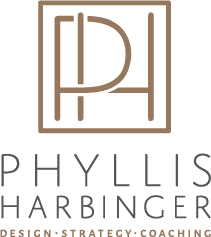A Blueprint for Successful Onboarding in Interior Design Firms
Joining an interior design firm is like stepping into a world where creativity knows no bounds. However, for new team members, this journey can be both exhilarating and overwhelming. The onboarding process plays a crucial role in ensuring a smooth transition and setting the stage for success. Helping new team members navigate their way into the heart of the creative process should be at the forefront of your onboarding strategy. Following these steps can ensure a smooth onboarding process and a deeper understanding of the position, firm ethos and expectations of the new hire from Day One!
1. Preparing for the Design Journey:
Before the first day, it's your responsibility to lay the groundwork for a seamless onboarding experience for your new hire.
Start with a Welcome Package, which should provide new hires with a comprehensive road map. Here they will find essential documents, firm mission statement, and perhaps a glimpse into ongoing projects to get them up to speed on the firm's current workflow, culture and expectations.
Workspace Setup is key. Making sure that the new team member's workstation is fully equipped with the necessary tools, software, and resources sets the stage for productivity from day one.
On the first day, we like to have a hosted Orientation Session, where our newest member meets the team. Hosting a structured meeting, whether virtual, in-person or hybrid, to introduce new hires to key team members, will allow you to “paint the picture” of your firm’s values and design ethos, and allow each member a chance to share information about their role and responsibilities within the organization. I also suggest assigning a mentor or buddy to guide them through their initial days fosters a sense of belonging and support.
If your new hire will work on-site, have a team member give them a tour of the office, to familiarize them with the layout, design studio(s), and collaborative spaces, helping them feel at ease.
2. Nurturing Design Talent:
I am a big believer in investing in your team. I have been mentoring new hires for over twenty-five years, Investing in their professional growth and development. To do this – you will need to provide:
On-the-Job Training: Pairing new hires with experienced designers or project managers allows them to learn from real-world projects, gain hands-on experience, and understand the firm's design process.
Opportunities for skill development through workshops, online courses, and industry events, which gives them the ability to be current with the latest trends, software, and techniques in our industry.
It is your job to provide both feedback and coaching. In the first half year, a monthly check in and consistent mentoring from you/your team will help them identify areas for improvement, amplify their skill sets, and navigate challenges more effectively. The onboarding process doesn't end after the first week or month—it's an ongoing journey. Providing continuous support. As the journey progresses, having regularly scheduled check-in meetings to assess progress, address concerns, and provide guidance ensures that new team members feel supported and valued.
It is deeply important to foster an environment that provides both collaboration and connection. Interior design is a collaborative endeavor, and fostering a culture of teamwork is essential. We try to involve our new team members in fun, out of the box activities like a walk at the beach and then a power lunch. Sometimes we will all do a yoga class. We have also had a holiday dinner and broadway show where we all are together to celebrate success while also sharing an experience.
For a more structured approach, brainstorming sessions, or design workshops, having the team attend a CEU event can create opportunities for new team members to bond with colleagues and build relationships. Creating an environment where open communication is encouraged enables new team members to voice their ideas, ask questions, and contribute to discussions without hesitation.
Project Involvement: Involving new hires in ongoing projects, client meetings, and design discussions allows them to contribute their ideas, gain insights into project dynamics, and understand client expectations.
Lastly, you should always think about both recognition and rewards: Acknowledging and celebrating the achievements and contributions of new team members through praise, awards, or promotions reinforces their sense of belonging and motivation.
Investing in the value of onboarding and continued mentoring and training is crucial to your firm and your team. By prioritizing communication, collaboration, and meaningful support, you will create an environment where every new hire begins their design journey with confidence and enthusiasm.

